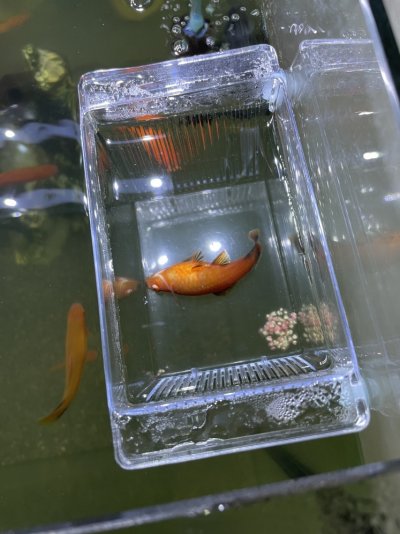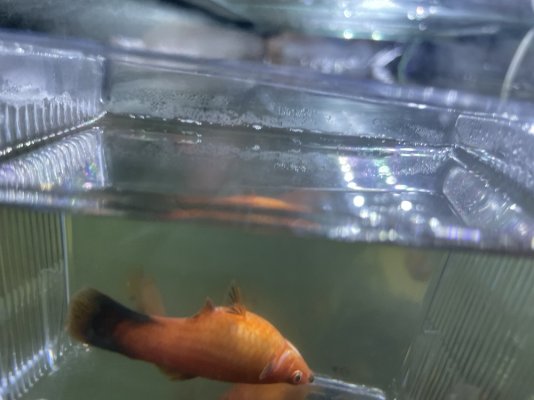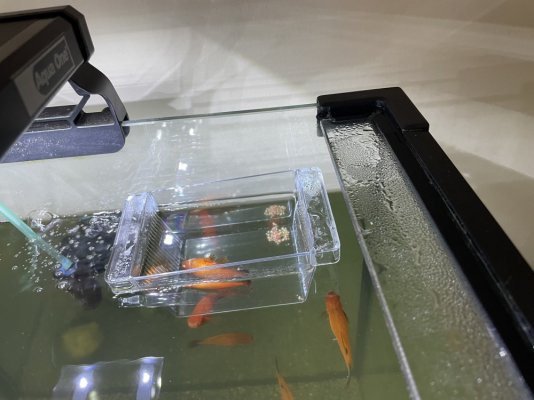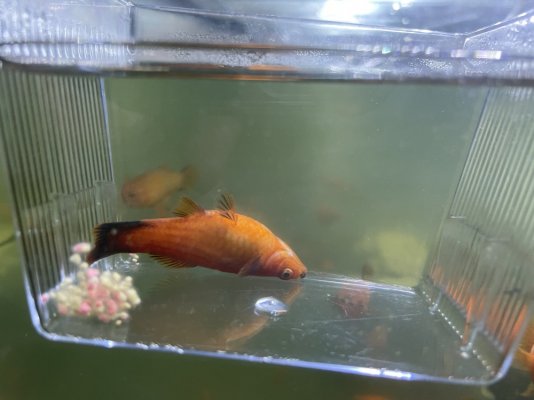Hello,
Yesterday I noticed my swordtail fish lying on her side barely moving, so I moved her into a box so the other fish wouldn't bother her. A few hours later, I did about a 60%ish water change because I felt this behaviour was due to an ammonia spike but she has since turned upside down fully and cannot keep herself upright. She is moving a lot more, trying to eat and even attempting to turn herself around. Does anyone have any advice as to what I can do to help her recover?
Yesterday I noticed my swordtail fish lying on her side barely moving, so I moved her into a box so the other fish wouldn't bother her. A few hours later, I did about a 60%ish water change because I felt this behaviour was due to an ammonia spike but she has since turned upside down fully and cannot keep herself upright. She is moving a lot more, trying to eat and even attempting to turn herself around. Does anyone have any advice as to what I can do to help her recover?




